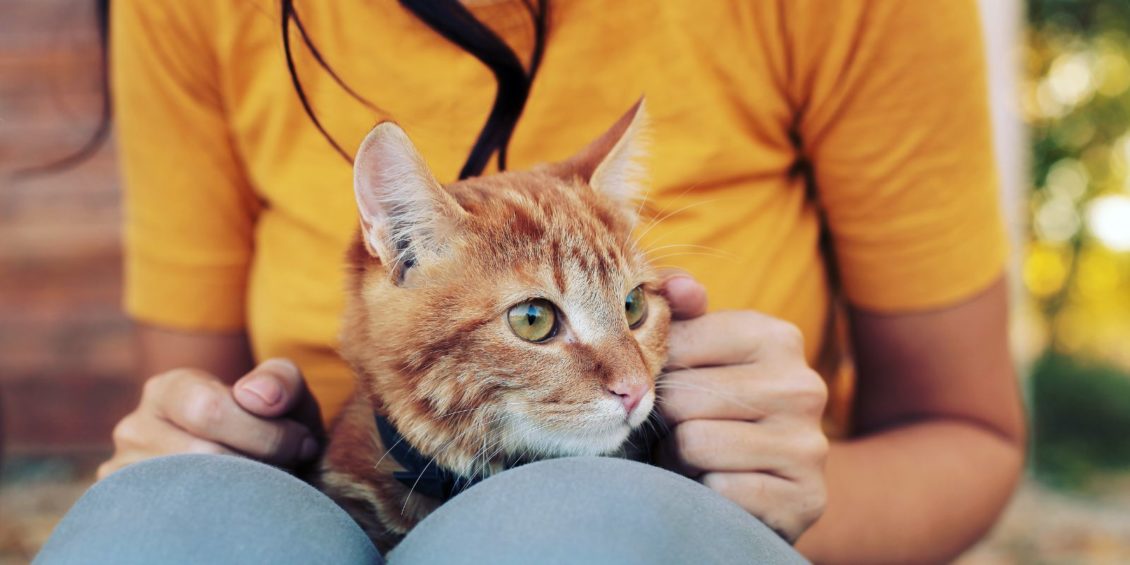It’s safe to say we’re a nation of feline fanatics. Millions of households up and down the UK are home to pussycats. Whether you’ve got a ragdoll, maine coon, sphynx or British shorthair, cat owners need to pay close attention to their furry friend’s health to support them in living a happy and fulfilled life.
Taking good care of your feline friend is essential. However, even the toughest of cats cannot avoid some of these cat health concerns. Being aware of the signs and symptoms of which can help identify and address issues early on. Here are some of the most common feline health concerns you need to be aware of, as well as what steps to take next.
Vomiting
Vomiting is arguably the most common health problem with cats. There can be a variety of causes for it too. These range from eating something inedible or poisonous, to infections. Other causes could be down to hairballs, diabetes, or urinary tract disease. Vomiting symptoms are normally obvious and include abdominal heaving and drooling.
Over time, vomiting can quickly result in your cat becoming hydrated. If your feline friend continues to vomit or acts ill, don’t hesitate in contacting a vet. It may be wise to collect a sample of your cat’s vomit. You can bring this with you when you see the vet so they can examine it further. It can be incredibly distressing to see your cat continuously vomit. Be there to support them and make sure you get medical help as soon as possible.
Kidney Disease
Your cat’s kidneys play a critical role in expelling waste and toxins, as well as regulating blood pressure. The kidneys also play a key role in producing hormones, enzymes, and red blood cells. Because of this, if your cat’s kidneys aren’t working properly, this can quickly lead to serious and potentially life-threatening issues.
It’s essential you detect kidney disease early before symptoms begin. This provides more time to identify the underlying causes and slow disease progression. Kidney disease is typically more common amongst older cats. The problem with kidney disease is many of its symptoms mirror many other conditions. Nonetheless, be aware of symptoms like a reduced appetite, increased thirst, and blood in urine. Again, make a vet appointment if you have any concerns. Understandably, a visit to the vet may worry you, especially when it comes to your finances. Taking out Purely Pets Cat Insurance may be the answer. They provide cover in the extremely worrying event your cat gets sick or injured.
Fleas
Fleas are another very common health concern for felines. However, it is one that can be easily treated. There are certain signs to look out for which may indicate your pussycat has fleas. These include constant scratching, flea dirt on the skin, and frequent licking. If you spot tiny black dots on your cat’s skin, this is evidence they have fleas. Other signs to look out for include hair loss, skin infections, irritated or red skin, and hot spots.
Fleas can live in your cat for more than a year. There is a risk of your cat developing anaemia if the problem turns serious. Therefore, don’t delay in treating your cat’s flea problem. You can purchase specialist products from the supermarket to treat fleas. If you find they haven’t gone and you’re not sure what actions to take, see a vet for further advice. When you get fleas under control, this will prevent any future infestations from happening. Flea treatments can include oral medication, foams, powers, and topical medication.
Tapeworms
One common health concern in cats is tapeworms. These lurk under the surface, meaning they cannot be seen by the naked eye. Tapeworms live in a cat’s small intestine. In some cases, they can grow as long as two feet. In general, tapeworms are segmented and normally break apart when expelled. It is incredibly unlikely to see a full worm. Normally, you will only see the segments.
Several symptoms may indicate a tapeworm infection. These include weight loss and vomiting. The easiest way to identify if your feline has tapeworms is by looking at their faeces, around their anus and in their bedding. Normally, tapeworms come out of your feline’s anus while they are relaxed or sleeping. Should you spot small white worms or what appears like sesame seeds or grains of rice, it’s likely your cat has tapeworms. Treatment for tapeworms can include injections, topical, or oral medication. In most instances, cats get tapeworms as a result of swallowing a flea. Therefore, you will need to tackle any flea problems first before moving on to tapeworms.
Diarrhoea
There are all kinds of things that can cause diarrhoea in felines. Some of the most common of these include spoiled food, infections, parasites, and liver disease. Symptoms of diarrhoea are watery, loose, or liquid stool. Depending on the cause, diarrhoea can last for 24 hours, a week, or longer. If your feline has diarrhoea, offer them plenty of clean, fresh water. This will prevent your cat from becoming dehydrated. Once you have done this, remove your cat’s food for no longer than 12 hours.
If your cat still has diarrhoea and you find it’s getting worse, take them to the vet. This is because the problem can only get worse. Should you spot bloody or dark stools, a fever, loss of appetite, or lethargy, these can become serious very quickly. Only a vet will be able to provide expert advice and treatment on what to do next. You may find your vet recommends changing your feline’s food to prevent diarrhoea from occurring. Other suggestions include eating more fibre, drinking more water, or taking probiotics.
Heart Disease
Unfortunately, heart disease is a common cat health concern. Millions of cats are affected by heart disease across the world. The three classifications include dilated, hypertrophic, and unclassified. Although, the most common form of heart disease in cats is hypertrophic. It’s important as a cat owner to have a good understanding of this common cat health concern. With the right knowledge, you will know what signs and symptoms to look out for.
Potential causes of heart disease in felines include food deficiency, infections, and exposure to toxins. Some breeds are more at risk of developing heart disease than others. For instance, ragdolls, Persians, and maine coons are at an increased risk of developing hypertrophic cardiomyopathy. You will need to see the vet to diagnose heart disease. This is because symptoms in cats include irregular heartbeats, heart murmurs, and an unusually slow or fast heart rate which can only be picked up via an X-ray.
Feline Lower Urinary Tract Disease
Feline lower urinary tract disease is another common health concern that cat owners need to be aware of. Both male and female cats can get the disease. It tends to occur in felines that are unfit, overweight, or who eat dry food. There are certain things that can increase a cat’s risk of developing feline lower urinary tract disease, such as stress, sudden changes, and living in a multi-cat household. Treatment will depend on the type of disease your feline has.
Symptoms of feline lower urinary tract disease to look out for include drinking more water than normal, blood in urine, urinating in unusual places, and crying when urinating. Other symptoms to look out for include licking around the urinary area, depression, lack of appetite, and dehydration. It is always an emergency if your cat cannot urinate. You should see your vet straightaway if you believe your feline has a urinary tract problem.
Eye Problems
Eye problems in cats can be caused by numerous things. Some of these are conjunctivitis, cataracts, trauma, viruses, corneal ulcers, and retinal disease. Symptoms to look out for which could indicate your cat has an eye problem include tear-stained fur, watery eyes, and cloudiness. If you spot gunk in the corner of their eye, white or red eyelid linings, or they’re pawing at their eyes, these also signal your cat has an eye problem.
Unless you’re fully aware of what is causing your feline’s eye problems, there is not much you can do other can speak to a vet. Eye issues are concerned an emergency so don’t waste any time in booking an appointment. You may find your cat simply needs eye drops to rectify the issue. However, in some cases, surgery may be the only option.
For cat owners, you’ll want to do your very best in supporting your feline friend and helping them to live a healthy, happy, and long life. To achieve this, it’s your responsibility to keep a close eye on your cat and look out for any unusual signs.
If you have any concerns regarding your cat’s health and wellbeing, don’t delay in making an appointment with a vet. Only a professional will be able to fully examine your feline friend and either give them a full bill of health or provide specialist treatment and medication to relieve symptoms.








Leave a Reply
View Comments